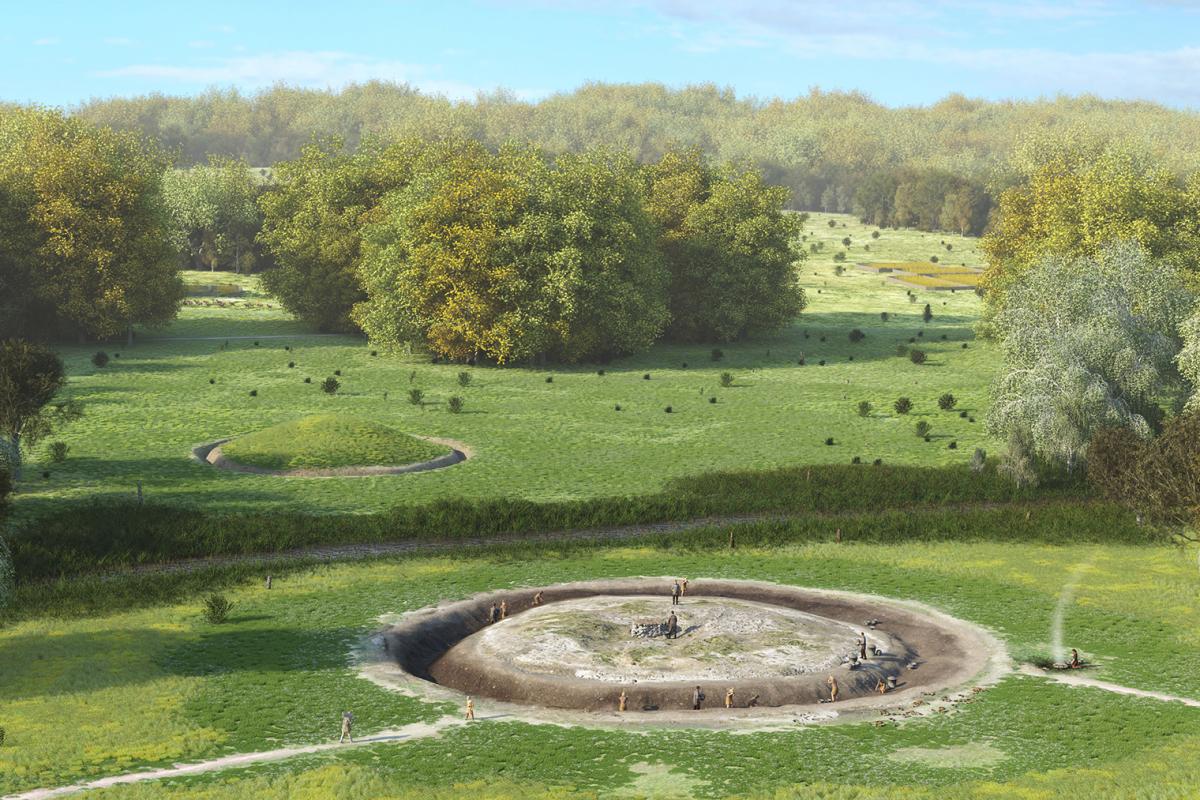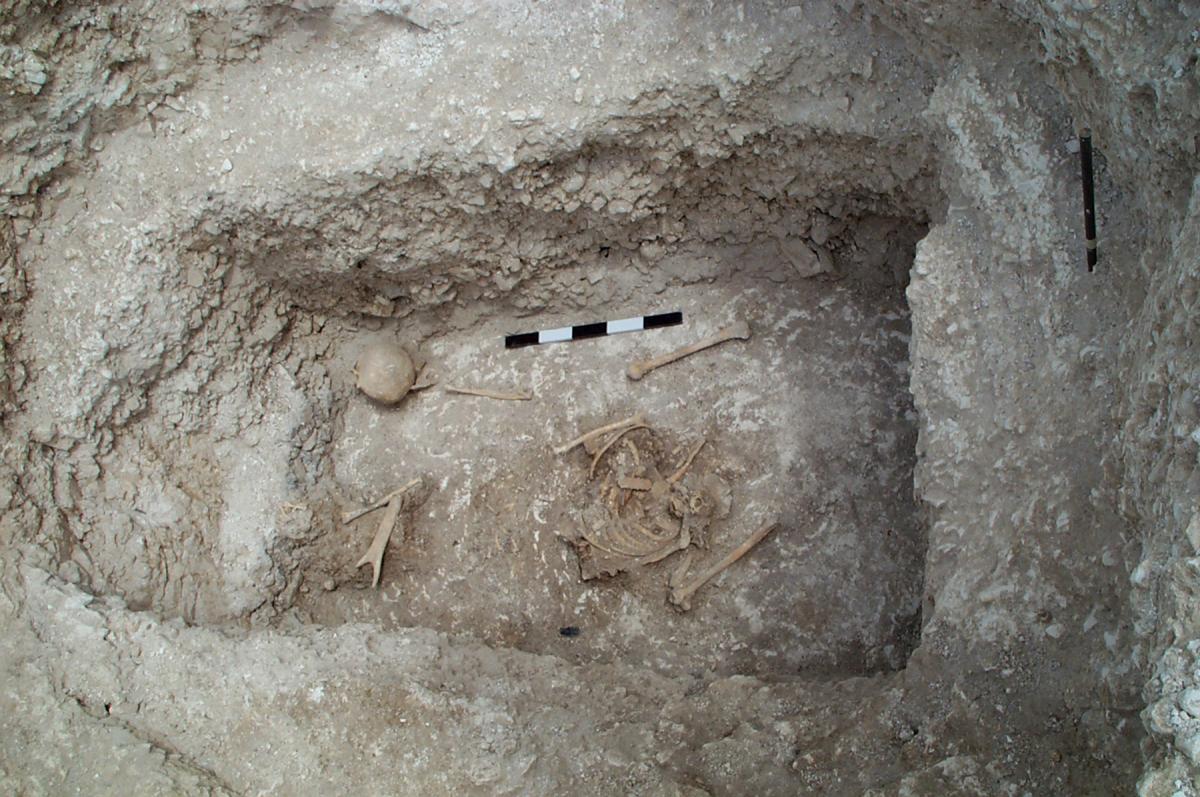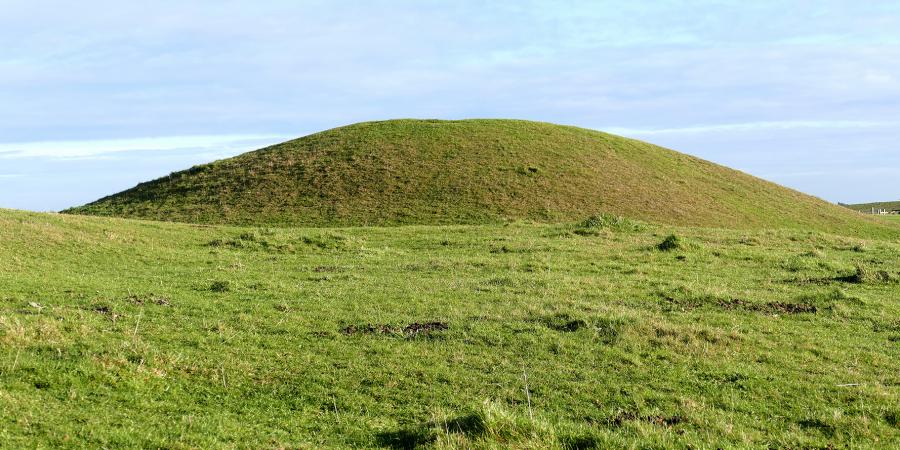True story. A group of Wessex staff were having dinner in the pub.
“In Athens, we exhumed my grandfather three years after he died,” said Maria nonchalantly. “We washed his bones in oil and wine and placed them in an ossuary. It’s normal in Athens.”
Maria works in the Sheffield Finds department, and she’d just put me off my lamb shank. Although the Greek Orthodox ceremony Maria described is a pragmatic response to a lack of space in one of Europe’s most ancient and crowded cities, it also illuminates how different cultures have different attitudes to death and the body. Maria’s story came back to me at the Prehistoric Society’s ‘Exploring Bronze Age Barrowscapes’ day school in London on the 16 March 2019, which concerned prehistoric responses to the same issues.
The speakers presented details on sites from Cornwall to Tayside. Few of the excavations were new; the presentations instead formed a series of case studies to illustrate the diversity of monument types, the burial rites they witnessed, and current approaches to unlock the meaning of these monuments.
‘Funerary’ rites
Despite the geographic spread, certain common themes emerged. Barrows are often described as ‘funerary’ monuments, but it became clear that they hosted ceremonies very alien to the modern Protestant concept of a funeral.
Like Maria’s grandfather, the Bronze Age dead did not rest in peace. We were told of the Beaker-period open graves, where bodies lay in the ground, but open to the sky, before the bones were disturbed, rearranged or taken elsewhere.
It was intriguing to hear of cremated bone wrapped in a bearskin found in a monument on Dartmoor, where discrepant radiocarbon dates from the bearskin and bone revealed that the person had died long before they were placed in the ground. Where had this material been in the meantime? Who did the ‘mourners’ think they were burying - a relative? Or a fictionalised hero from the past?

Barrows and boundaries
It is fairly common for these so-called funerary monuments to be bereft of human remains. Although disappointing to early (and perhaps modern) students of the past, it affords an insight into the minds of the barrow-builders. Were they perhaps as concerned with territoriality and legitimising rule through emphasising lineage, as remembering loved ones? It was noted that landscapes in which barrows were most commonly built are often the same places where the earliest field systems are to be found. Does this reveal an ongoing concern to ‘stake a claim’?
We were told about the varied landscape settings of barrows. Although it is assumed that the locations of most barrows were carefully selected, the reasoning is easier to identify in some cases than others. Barrows were often sited in places that were already important. An alignment of monuments at Parc Cybi near Holyhead ‘connects’ a Neolithic long barrow to the hulking cairn-like summit of Holyhead mountain, perhaps in an attempt to confer legitimacy on the barrow builders by linking them both with the ancestors and the crown of the land itself.
Recent work in the Petersfield area of the Weald, has surveyed almost 300 barrows, with many newly discovered. It was claimed that their distribution reveals the territories of settled social groups – no ‘footloose Celtic cowboys’ here. Many barrows seem positioned to command valley-to-ridge communication routes, or in relation to watercourses and watersheds. It was argued that barrows often ‘secured’ access to water, which would have been a key resource in a largely pastoral economy. Given the importance of good grazing land at this time, should the turves used to build many barrow mounds be seen themselves as a type of sacrificial offering?

Wessex Archaeology expertise
It was heartening to hear sites with which Wessex Archaeology has been involved cropping up a few times, including Porton Down and Boscombe Down (whose ‘Amesbury archer’ was mentioned more than once).
One of the talks focused on Barrow Clump, which will be published together with the results gained from Operation Nightingale (in conjunction with the MOD) later in 2019.
It was an excellent day, and with five Wessex staff in attendance, it was good that the company as a whole could both learn and contribute. It certainly provided me with knowledge, inspiration and motivation to take to my current post-excavation work on two newly excavated barrow sites.
Patrick Daniel, Senior Officer, Sheffield Office
